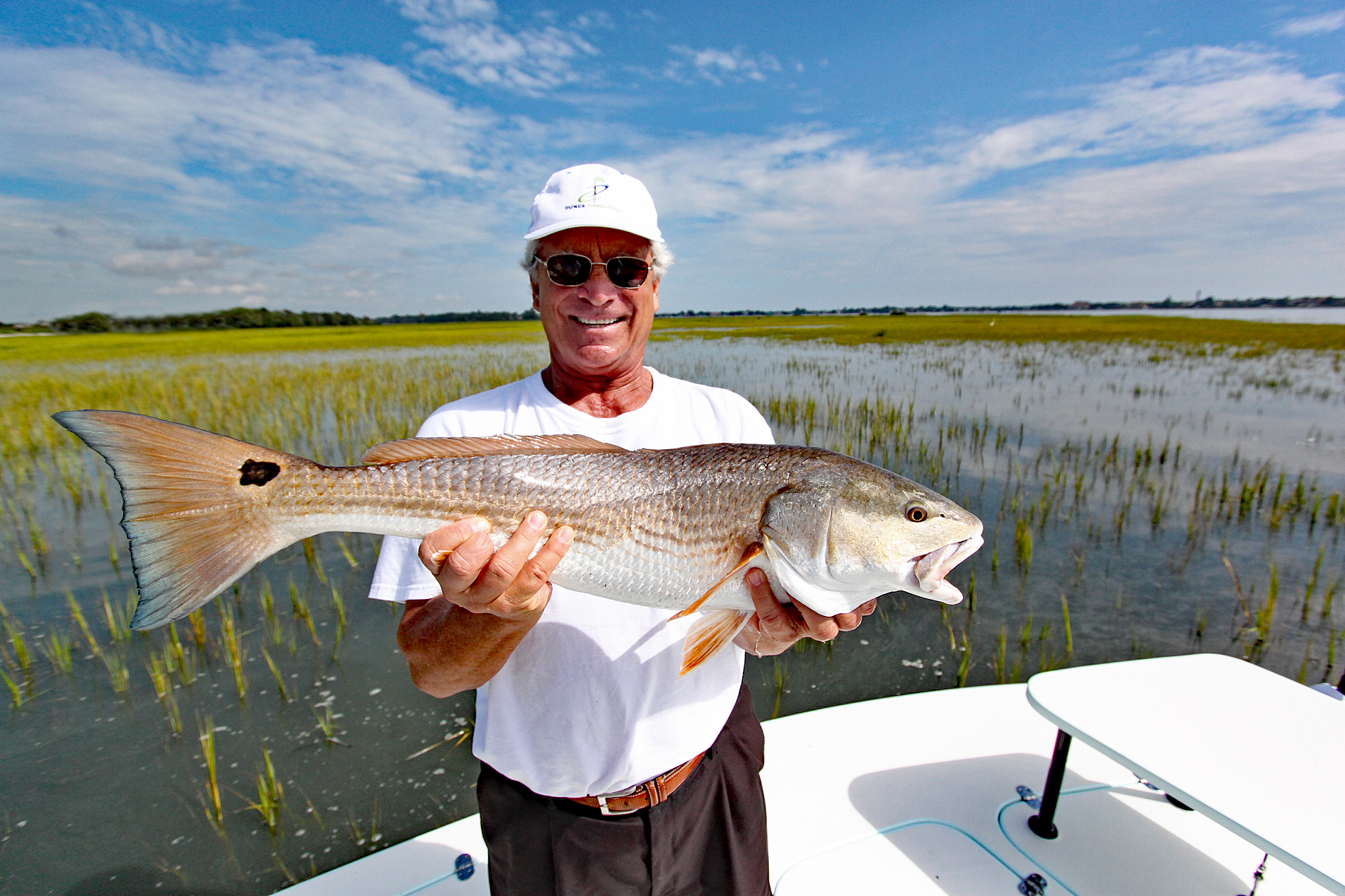The Fall floods are coming….
You can feel it in the air… the slightest bit of coolness as we start to get some air flow from the North. It may still be hot but you can tell Fall is on the way. What does that mean for inshore anglers in Northeast Florida… flooded grass and tailing redfish! This is one of the most exciting times of the year to fish for redfish. The tide will “flood” around the new and full moons, and redfish can get to areas in the spartina marsh that they usually can’t access. The redfish seem to get a new attitude when up in the grass, as the only thing on their minds is finding something to eat. Crabs, shrimp, and snails are on the menu in the flooded grass, and sometimes it seems like the reds will stop at nothing to get at them. They will have their noses buried in the mud with tails waving in the air looking for crabs. You may also come across some redfish (and sheepshead) with their eyeballs literally out of the water looking for snails and crabs that have climbed up shoots of marsh grass to avoid being eaten. Light tackle and fly fisherman alike will travel from all over to get a taste of the flood tide fishing, and it’s not as hard to get to as you might you think. There are even plenty of areas where a boat isn’t needed… just an old pair of tennis shoes or wading boots. No matter how you do it you really don’t want to miss out on the “floods”!
Timing is everything when it comes to fishing up in the flooded grass. You’ll want to get to your first spot early, which can be a couple hours before the peak of the tide depending on how high it’s going to get. That way you can be there as the water, and more importantly, the fish start to flood up on the grass flat. The tide will get high nearest the inlets first, and if you plan your trip right, you can follow the tide in and spend half the day chasing the tailers. Look for areas that don’t usually have water on them on a normal high tide. A good way to spot the prime locations is to look for the flats with a firm bottom and slightly shorter grass.
Once you’ve found your location there are a few different ways to approach the fish. You don’t need a high-tech poling skiff, but if you have one, poling the boat within casting range is a great way to go about it. One of my favorite ways to go after them is to park my skiff on the edge of the flat and wade out to the fish. Plus, there are some great areas from Fernandina to Palm Coast that you can access by parking your car on the side of the road and wading out to the grass flats from there… no boat needed!
Once you get on the flat you’ll want to try and move slowly enough through the grass that you don’t cause much of a wake. If you’re sneaky enough, you can get really close, within a few feet sometimes. Once you’re in range, lure presentation is key. You absolutely do not want to cast your lure on top of the fish. You’re likely to send the fish shooting off the flat if your cast lands too close. Try and cast well past the fish and then drag the lure across the grass until it’s close enough for the fish to see or smell it. Be patient and watch the fish for a few moments to see which direction it’s moving; that way you can present your lure to his nose and not his tail.
When it comes to lure and fly selection for the flood fish there’s a huge variety and all kinds of new-fangled things to try. No matter what you end up using, you’ll want to make sure that it is rigged weedless or snag free. Some of the areas you’ll encounter will have some really thick grass and an open hook will only have you hung up as soon as it lands. My go-to set up for years now has been a Slayer Inc. SST paddle tail rigged on a Slayer Inc. Penetrator weedless hook. They make those hooks in a variety of different weights so you can customize them to the thickness of grass you’re fishing. If it’s really thick I would use the 3/16oz hook to help get the bait down a bit, and in more open areas you can go with the 1/16oz. Sometimes if the fish gets really picky you can go with a scented soft plastic like a Gulp Shrimp. If the fly rod is your thing, a weedless spoon fly is a long standing favorite in Northeast Florida. Of course there are a ton of different shrimp and crab imitation flies that work great as well. I like to tie a small rattle on my flies as sometimes that little bit of noise can make the difference in getting the fish’s attention, especially if he’s got his nose in the mud. We have some fantastic fly shops in the area like Black Fly Outfitters in Jacksonville and Oyster Creek Outfitters in St. Augustine. If you need help with fly selection, or anything at all related to fly fishing the flood, stop in one of those shops and they will be happy to get you hooked up. There are also some really great fishing guides in the area that can show you the ins and outs of fishing the flood whether you’re an expert or just a beginner on both spin and fly.
If you’ve never experienced fishing the “flood” do yourself a favor and check your tide tables and get out there! You won’t regret it!
Capt. Tommy Derringer
www.InshoreAdventures.net
904-377-3734


